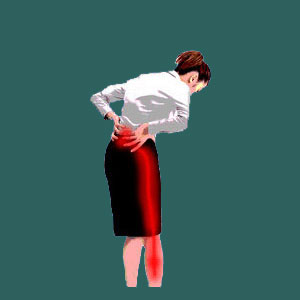
Sacroiliac pain after giving birth is a possible negative consequence of having a baby. Temporary pain is common following birth, but chronic pain is rather rare. However, when damage is done to the sacroiliac joint due to the structural and functional changes associated with pregnancy and birth, the woman might have to undergo treatment to correct the problem and restore joint stability.
Hypermobility is certainly the most common postpartum consequence to affect the sacroiliac joint. This excessive motion in the joint structure can occur due to several possible reasons, all of which will be detailed in this focused topical essay.
This discussion provides answers as to why some women develop sacroiliac symptoms during pregnancy which endure after birth, as well as why other women only suffer postpartum SIJ pain. We will explore the usual causes of these problematic pain syndromes, as well as detail the best interventions which can bring about lasting relief.
Sacroiliac Pain After Giving Birth Symptoms
A majority of women who suffer postpartum SIJ symptoms actually begin to experience pain before giving birth. Most affected women will begin to express sacroiliac pain toward the end of the second trimester, usually due to accumulation of relaxin hormones that act on the SI joint or due to weight gain that compounds the hypermobility caused by relaxin. A minority of affected women will only suffer sacroiliac discomfort and excessive movement following the actual birth and will not report suffering any pain during pregnancy.
In all cases, symptoms will almost always be linked to joint hypermobility due to persistent effects of relaxin hormones, often combined with the stresses associated with substantial weight gain on the sacroiliac structure. In most instances, the joint will produce pain in certain positions, such as when rising from a seated posture, when kneeling on all fours, when sitting down and when bearing weight or using the legs for vigorous activity.
Causes of SIJ Pain After Giving Birth
When a woman is pregnant, her body prepares itself anatomically for the birth process. Many changes occur inside a woman’s physique, but the one which affects the sacroiliac joint most is the increased production of the hormone called relaxin. This organic chemical helps the joint to increase its range of motion and facilitates the passage of the baby to the birth canal during delivery. Relaxin acts on the ligaments which regulate sacroiliac joint mobility. It increases the ability of the joint to move and can sometimes have lasting effects on the joint structure, especially after repeated births.
Weight gain also plays a major role in sacroiliac joint symptomology, especially in women who put on excessive weight in the lower abdomen. Since the pregnant belly distends over the anatomical line of the torso, this weight is frontally-massed and basically unsupported from below. The result is exponential stress on the sacroiliac joint under weight bearing activities, exacerbated by its already compromised and possibly unstable state caused by the systemic effects of relaxin.
Sacroiliac Pain After Giving Birth Tips
Women should be proactive in their health throughout life and especially when they are pregnant. We encourage expectant mothers to take preventative action to help minimize their risks of suffering sacroiliac pain during pregnancy and after the birth:
Stay active as long as possible into the pregnancy. Exercise is good for you and your baby. Focus on conditioning the sacroiliac joint in order to make it strong and resilient against the effects of relaxin and weight gain. Yoga, tai chi and Pilates are excellent pregnancy activities.
Try not to put on excessive weight above the growth needed to sustain a healthy baby. Excessive weight gain during pregnancy is a major health threat that might have lifelong consequences to your health.
If you do begin to experience pain in the sacroiliac during pregnancy or postpartum, consult with your physician quickly as some therapeutic interventions are more effective when symptoms are first expressed. Often, physical therapy can remedy these pain issues and prevent the condition from worsening. If not, there are symptomatic methods of care available that can minimize pain and allow you to remain active without risking your health or your baby’s. Just be certain to stay clear of drug therapies if you are pregnant or breastfeeding. Instead, focus on natural methods of care, such as chiropractic, exercises, massage, acupuncture and activity avoidance in the short-term.
Sacroiliac Joint Pain > Sacroiliac Facts > Sacroiliac Pain After Giving Birth





